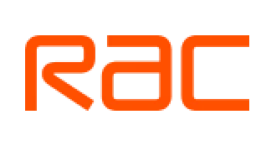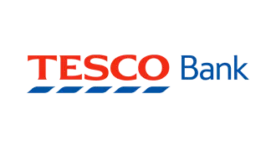Table of Contents
Most business credit cards allow you to withdraw cash at a regular cash machine or ATM, just like a debit card or a personal credit card. This is called a cash advance.
But although it may seem like a convenient way to access cash in a hurry, using your business credit card to take out a cash advance can be an expensive way to borrow.
Here, we explain how business credit card cash advances work, the costs and the alternatives.
What is a cash advance?
Withdrawing money from an ATM using your business credit card is called a cash advance. This is because your credit card provider is lending you money you will have to pay back.
Before you consider a cash advance, it’s important to know there are some key ways in which cash advances work differently from other purchases on your business credit card:
- You’ll be charged a cash advance fee: Typically, business credit card providers will charge you a cash advance fee of around 3% of the amount you withdraw, or a minimum of £3. So if you withdraw £200, you will be charged around £6.
- There’s a higher rate of interest: Even if you have a business credit card with a low or 0% interest rate, this favourable rate is unlikely to apply to cash advances. Check your terms and conditions to find out exactly how much interest you will pay.
- You won’t get an interest-free period: When you spend with a business credit card, you typically have up to 56 days to clear the balance before you are charged interest. With a cash advance, however, you won’t normally benefit from this interest-free period and will be charged interest from the moment you withdraw the money – even if you clear the balance before your next statement date.
- It could impact your business credit score: Using a cash advance could indirectly hurt your business credit score, since you’ll be increasing your credit utilisation ratio (the amount of credit you’re using as a proportion of the amount of credit afforded to you). If you are unable to repay this extra debt, this is also likely to have an adverse effect on your business credit score.
What counts as a cash advance?
It’s not just cash withdrawals that are viewed as cash advances.
Although the rules vary between providers, the following are all likely to be classed as cash advances. This means they will also incur extra fees and a higher interest rate:
- Mortgage payments.
- Buying foreign currency.
- Paying a utility bill.
- Spending money on gambling, including lottery tickets and scratch cards.
- Transferring money to a current account.
- Share dealing, or buying cryptocurrency.
- Paying government or court fines.
- Buying or topping up payment cards, mobile wallets or electronic money.
How do business credit card cash advances work?
Getting a cash advance from a business credit card is fairly simple. If you want to take out cash from an ATM, you just need to insert your card and key in your PIN, just as you would when using a debit card.
However, there’s usually a maximum limit that you can withdraw, which may be less than your available balance. This varies between providers, so check the terms and conditions. Some ATMs also have withdrawal limits, which are typically set at £300-£500 per day.
You may also be able to use your business credit card for cash advances abroad. However, you will be charged an additional foreign exchange fee on top of your regular cash transaction fee and interest, so this is a particularly expensive option.
Should I use a business credit card for a cash advance?
A cash advance is a quick and easy way to get your hands on short-term capital, so it can be tempting if you have to cover an unexpected expense. However, it’s an expensive way to borrow – and if you rely on it too often, it could indirectly impact your business credit rating.
Generally speaking, you’d do well to avoid using your business credit card to access cash advances. When it comes to borrowing money, there are other options out there which will probably allow you to access capital on better terms.
If you do need a cash advance as a last resort, you should try to pay off the balance as soon as possible to minimise the amount you will pay in interest.
Furthermore, make sure you take a close look at the cash advance rates and fees associated with your business credit card, and make sure you fully understand how much a cash advance is going to cost your business before you take one out. In all cases, never withdraw more cash than you can afford to repay.
Alternatives to a cash advance
Before you take out a cash advance on your business credit card, it’s worth exploring other funding options:
- Business loans: A business loan could provide you with more capital on longer and more flexible terms than a cash advance. Business loans for start ups can also connect new businesses with the capital they need to grow. Just remember that you’ll also be charged interest on a business loan – and know that if you fail to repay your loan on time, this will harm your business credit score.
- Merchant cash advances: This alternative mode of small business financing is available to certain businesses which accept debit or credit card payments. With a merchant cash advance, a lender will provide your business with a sum of money upfront, and you’ll repay this money automatically with a percentage of your card takings each day.
- Crowdfunding: This involves members of the public backing your business financially, usually in return for various rewards or enticements. Crowdfunding is sometimes used by start ups to raise seed capital from large numbers of private backers, but a crowdfunding campaign could also be used to help an established business cope with unexpected expenses. Crowdfunding platforms may come with their own fees and stipulations, which you should make sure you understand completely before launching a campaign.
- Invoice financing: Invoice financing is a way of quickly releasing cash tied up in unpaid invoices. Depending on the specifics of your invoice financing arrangement, you could either secure a loan against your unpaid invoices or sell your accounts receivables – the money your business is owed by customers – at a discount. In the latter case, which is known as debt factoring, the finance provider would also collect the debts on your behalf. Just bear in mind that you’ll never be able to access 100% of the invoice value, and in the long run, you’ll always end up with less money than if you simply wait for your customers to pay.
- 0% interest business credit card: If you’re eligible for a 0% introductory offer on your business credit card then you won’t be charged any interest on new purchases for a set period of time. If you have an expensive purchase in mind, and can pay it off within the 0% period, this will be a cheaper option than a cash advance. Some business credit cards offer similar 0% offers for balance transfers – which could ease cash-flow pressures on your business.
- Family and friends: This won’t be an option for everyone, but it may be worth asking family members or friends for a loan. It can be a cheaper way to borrow cash, but you must consider the impact that borrowing money could have on your relationship. It is a good idea to put the terms of the loan in writing, so both parties agree on how and when it will be repaid.
- Overdraft: If you have an overdraft facility on your business bank account, it may make more sense to use this rather than withdrawing cash from your credit card. This will depend, however, on the availability of any overdraft facility and the cost of using it, since it’s common for business bank account overdrafts to incur arrangement fees and high interest rates. Overdrafts may be an option if you need to borrow a small amount of money over a short time, but if you don’t pay it off promptly, this can turn into an expensive way to borrow.
Image Source: Getty Images








